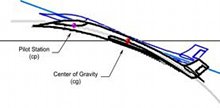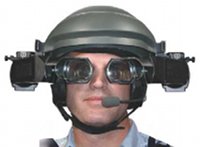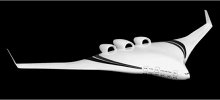Research Projects
 |
Upset Recovery Training | Loss-of-control (LOC) resulting from aircraft upset has become a major cause of commercial aircraft accidents. One strategy proposed for upset prevention is training the use of ground-based flight simulators. Simulators have safety, cost and time advantages over training in real aircraft. However, two critical issues exist. First, the simulation aerodynamic database is not typically valid beyond the aircraft's normal flight envelope, and second conventional simulator motion may not provide sufficiently accurate cues. The Flight Simulation Research Group at University of Toronto is investigating both of these issues with the ultimate goal to develop simulator requirements to support meaningful upset recovery training. |
 |
Handling Qualities of Flexible Aircraft | An increase in efficiency of aircraft designs invariably leads to increased structural flexibility. Flexibility has the potential to significantly reduce the HQ of aircraft, as the pilot's estimate of the gross vehicle motion is confounded by the bending of the vehicle and the possibility of bio-dynamic coupling. The Vehicle Simulation group has recently developed a new motion algorithm that will more accurately simulate flexible aircraft motion and work is ongoing to develop an accurate real-time flexible aircraft model. The effects of flexibility on HQ will then be systematically evaluated by test pilots using the flexible aircraft simulator. |
 |
Human Perception/Control Modelling | If an accurate model of human motion/perception existed it could be combined with a vehicle flight model to analyse the combined behaviour. This would allow virtual vehicle testing to be done completely offline without the need for an expensive flight or driving simulator. Control-theoretic models of a human performing simple control tasks currently exist, however these models have significant shortcomings. The UTIAS flight research simulator, with its various cueing systems, is an ideal facility to study human motion perception and control. The group's current research is focused on probabilistic modelling of perception and control. |
 |
Real-time Helicopter Modelling | The complexity of helicopters combined with the real-time demands of flight simulation has led to helicopter models with a large number of empirical parameters. Research is ongoing to develop more physics based, real-time models of helicopters for use in virtual flight test. |
 |
Blended Wing Body HQ | Blended wing bodies are being proposed for the next generation of commercial aircraft, primarily due to their fuel efficiency. Research is currently underway to develop a flight model of a BWB that will in turn be used in the UTIAS flight simulator to study the HQ of the BWB. |
 |
Motion Drive Algorithm (MDA) | Flight and ground vehicle motions typically far exceed the limits of traditional simulator motion systems. The MDA "filters" the vehicle motions to fit within the envelope of the simulator motion system while reproducing the important cues with as high a fidelity as possible. To date there is no optimal method to filter the vehicle motions, thus the group continues to develop new algorithms with the goal of improved cueing. |
17 October 2009 - P R Grant